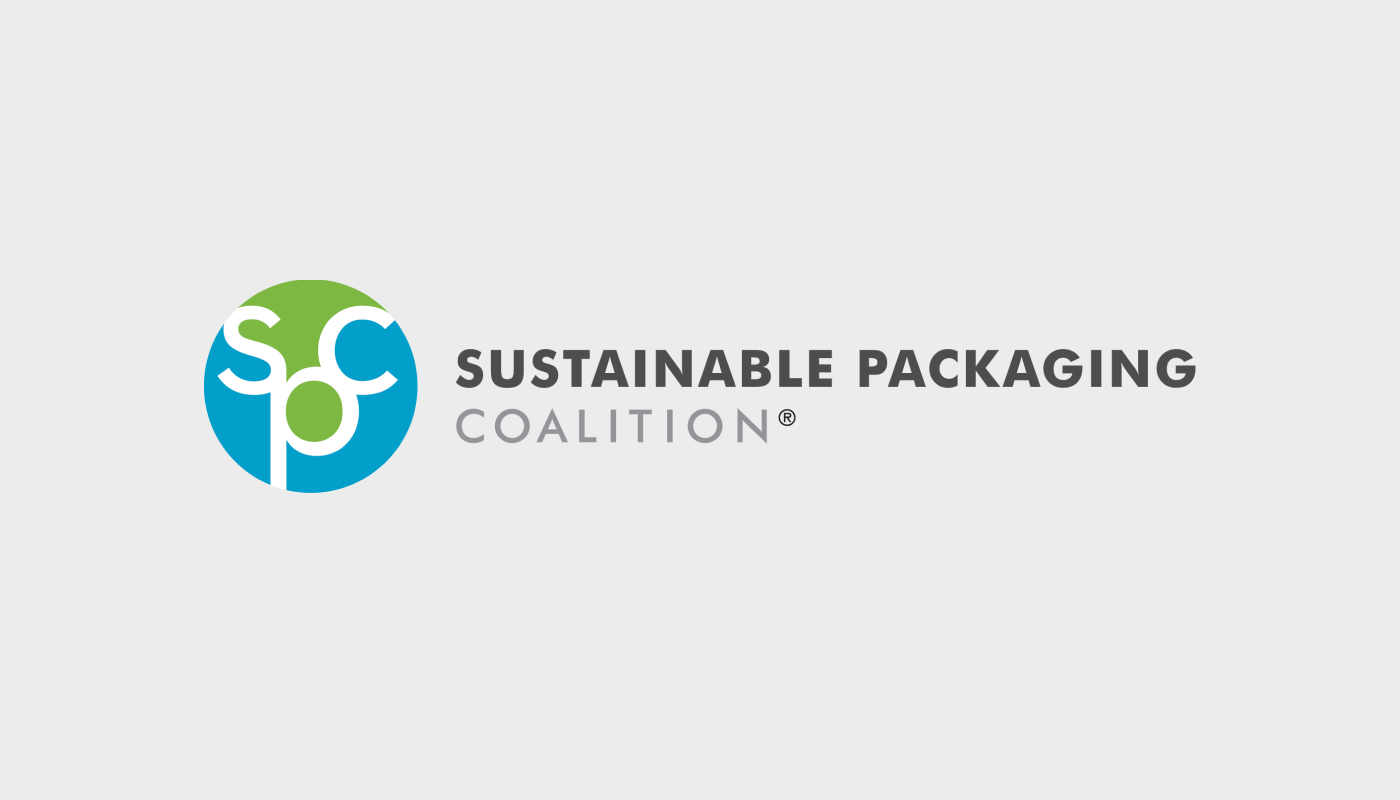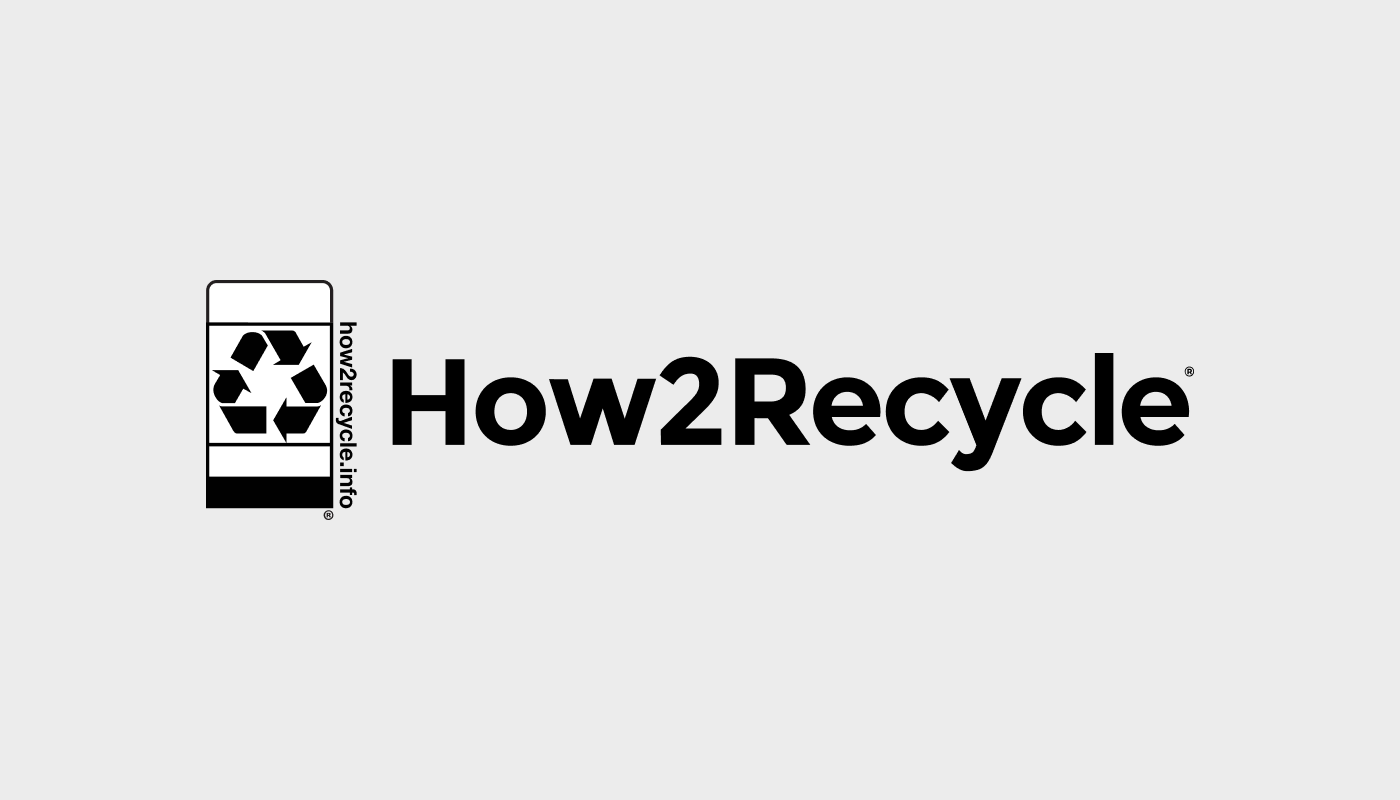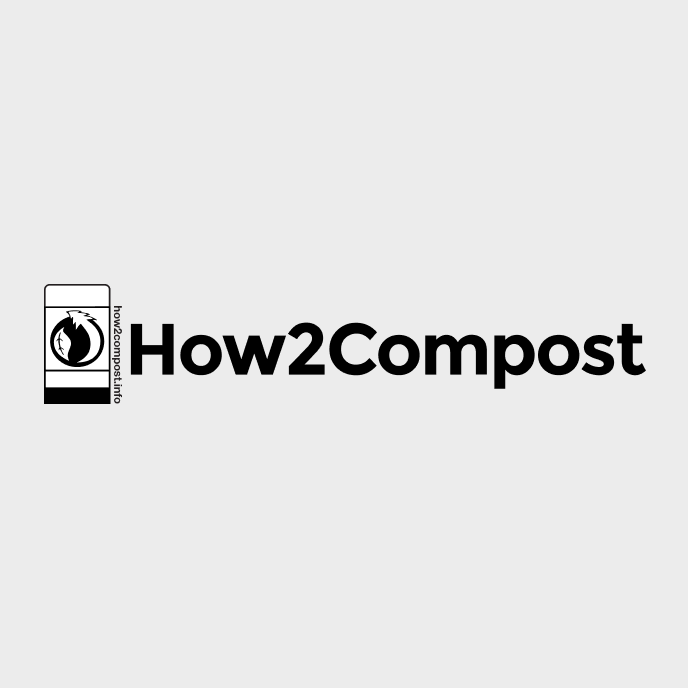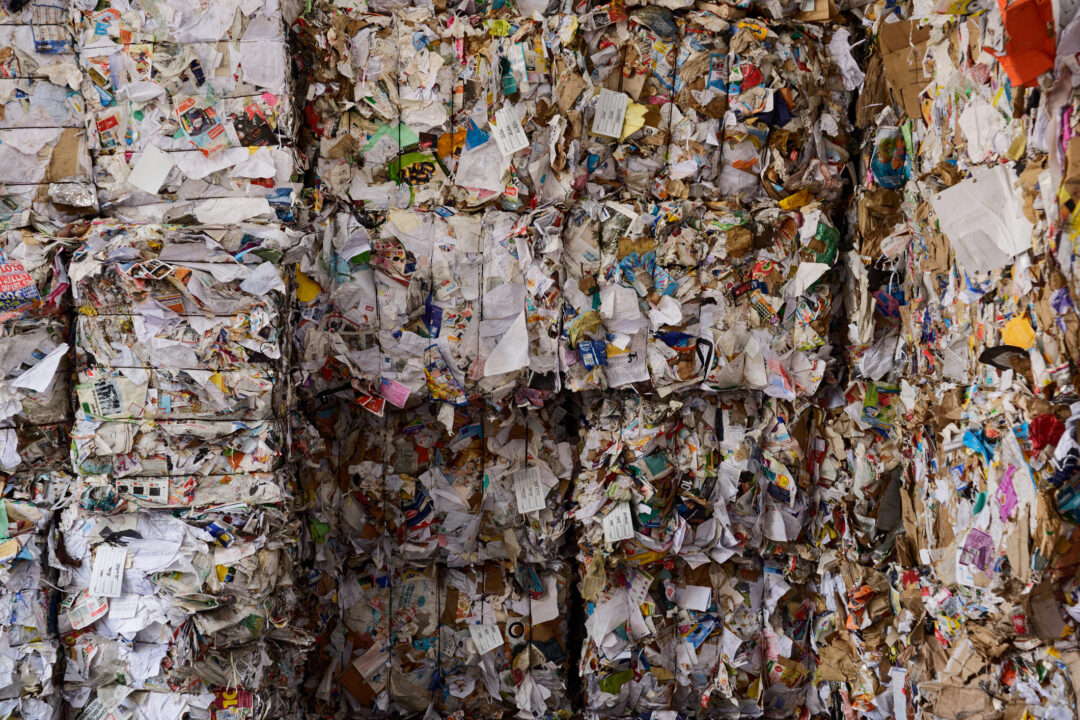The purpose of the How2Recycle Guide for Recyclability is to transparently provide the general public and How2Recycle member companies with guidance about what recyclability means, and insight about how the How2Recycle program assesses recyclability on a package-by-package basis.
Contents of this Guide
-
Why the How2Recycle program exists and how it works
-
What does ‘recyclable’ mean?
-
What the law says about recyclability claims
-
How does How2Recycle assess recyclability for each package under that definition?
-
Currently under study for How2Recycle
-
About us
Why the How2Recycle program exists and how it works
How2Recycle was created because the Sustainable Packaging Coalition (SPC), by way of its parent environmental 501(c)(3) nonprofit GreenBlue, identified the critical need for an accurate, consistent on-package labeling system. When SPC initially identified this need, recyclability labeling was too often absent—or when it was present, greenwashing was common. There was no impartial organization that synthesized and interpreted the divergent and diffuse data about recyclability across all materials. Additionally, there was no pragmatic recovery communication tool for the packaging industry to voluntarily leverage as a group.
When How2Recycle launched in 2012, many in the recycling and packaging industries were skeptical that brands would voluntarily label their packaging in a standardized way along with their competitors, including ‘giving up precious on-pack real estate’ and admitting when their packaging wasn’t recyclable.
Years later the How2Recycle movement proves those status quo adherents wrong. While labeling packaging for recyclability certainly won’t solve all our problems in how we use, value and manage materials in society, telling people how to actually recycle is frankly the least we can do. How2Recycle is thrilled that so many companies share this belief and together we can empower people to recycle more accurately.
How membership and the label request process works
The way membership works is brandowners—or in other words, consumer packaged goods companies, retailers or quick service restaurants—become members of How2Recycle for a modest annual flat fee. Then, they place the How2Recycle label on all, or a selection of their brands’ packaging—it’s up to them which packages they label. Every package that features a How2Recycle label undergoes an individualized recyclability assessment based on detailed packaging specifications that the company sends How2Recycle via its Member Platform. How2Recycle encourages its members to use How2Recycle labels on all their packaging or as many as possible, and to place the labels in the most prominent position and size on the packaging they are able.
There are over 330 brandowners and retailers representing over 2,600 brands in the How2Recycle program, and an additional 100 packaging producer (‘converter’) and material manufacturer members. Given this breadth of membership, the How2Recycle team has touchpoints with more than 4,000 packaging or sustainability professionals per month. How2Recycle is a movement of many people working together towards a common goal of helping drawing attention to and capturing the value of materials in our world. There is still plenty more hard work ahead for How2Recycle members, present and future, to get the How2Recycle label on the majority of all packaging in the marketplace, and to move towards all recyclable packaging.
How2Recycle enables unprecedented feedback to brands about packaging recyclability
How2Recycle is more than just a label. It can serve as a mirror, showing brands how recyclable their packaging really is. Sometimes it surprises them. Members can embrace the insights the label generates, and use the label as a conversation piece with R&D; teams, procurement teams, or suppliers—so they can explain to them where they are with the recyclability of their packaging, and where they want to go.
It is important for How2Recycle to provide brands effective feedback on the recyclability of their packaging so they can drive design improvements. For this reason, How2Recycle developed the first-of-its-kind platform so that our members can track, measure and improve the recyclability of their entire packaging portfolio: the How2Recycle Member Platform.
When each package receives a custom How2Recycle label on the Platform, the package is assigned one of three categories about the overall recyclability of the design (you can read more here). Additionally, specific practical recommendations for design improvement are issued. How2Recycle has issued over 150,000 specific recommendations for packaging design improvement to its members since late 2017. The Platform also allows brands to get feedback about new package designs to assess recyclability before they are launched. These recommendations have led to over 2,200 packaging designs specifically changing to become more recyclable as a direct result of How2Recycle.
How How2Recycle fits into the bigger picture
Recycling is complex. It’s a sometimes volatile system ultimately driven by global commodities markets, and is an interconnected but independent linkage of consumers, communities, material recovery facilities, reclaimers, and buyers of recycled materials. Recycling still has big problems that need solving, like increasing the quantity of valuable materials getting into the recycling cart, reducing contamination from nonrecyclable packaging that does not belong there, and the economic disparities between virgin and recycled material pricing.
For these reasons, what the recycling industry itself will look like in the long term will be hard to predict. We may see big changes to logistics, infrastructure and waste management in the Fourth Industrial Revolution; recycling could play a huge role in the resilience of society as we face greater material scarcity and climate volatility, but we need to invest in better technology and seriously address issues in market demand to face those challenges.
That said, How2Recycle’s contributions of transparent labeling and influencing package design are only a couple pieces of the pie to improve recycling. But they are critical pieces. How2Recycle’s Consumer Survey Report shows that 61% of people may be changing their recycling behavior as a direct result of How2Recycle.
Still, packaging being recyclable isn’t necessarily “enough.” Companies should also look to minimize environmental impacts at every point in the package’s life cycle, including sourcing packaging material sustainably, optimizing package design to use the least amount of materials to protect the product, and should build and invest in initiatives to grow and strengthen the recycling system.
We don’t want people to think that recycling alleviates all their consumption guilt. We should all consume less. Still, packaging protects products that have to be moved to be sold. In the future, it will be wonderful if we have robust reuse or novel delivery systems to rethink the entire product-packaging system. But we’re not there yet. So in the meantime, packaging is a reality of our daily lives—and How2Recycle is influencing companies to make their packaging more recyclable, and believes in the power of labeling for recyclability so people know what to do.
What does ‘recyclable’ mean?
The answer is often more complex than what meets the eye. Recyclability is not always black and white—important nuance and context makes this question surprisingly relative, depending on all the circumstances.
Packaging is recyclable if it can be collected, sorted, reprocessed, and ultimately reused in manufacturing or making another item.
What that means is that just because some local recycling programs accept a material, that doesn’t automatically make that package recyclable. Just because a package could be sorted or separated from other packages to potentially be recycled, that doesn’t make that package recyclable. Just because a material could technically be reprocessed in order to make something new, that doesn’t necessarily mean that package is recyclable. Just because you could sell the material to become something new, doesn’t mean it’s recyclable. A package is recyclable only if there is a substantial likelihood that it can do all of those things in the majority of communities where an item is sold.
What the law says about recyclability claims
Note that this is not legal advice.
In the United States, How2Recycle is designed to comply with the Federal Trade Commission’s Guides for the Use of Environmental Marketing Claims, aka ‘the Green Guides’ (Code of Federal Regulations, Title 16 Part 260) and Section 5 of the FTC Act, 15 U.S.C. 45. The FTC Green Guides state:
“A product or package should not be marketed as recyclable unless it can be collected, separated, or otherwise recovered from the waste stream through an established recycling program for reuse or use in manufacturing or assembling another item.”
Federal Trade Commission’s Green Guides § 260.12 (Guides for the Use of Environmental Marketing Claims, pursuant to Code of Federal Regulations, Title 16 Part 260). Emphasis added.
Likewise, in Canada, How2Recycle is designed to comply with the Competition Bureau Canada’s Environmental Claims: A Guide for Industry and Advertisers, aka ‘Enforcement Guidelines’ and the Consumer Packaging and Labeling Act. The Enforcement Guidelines similarly state:
[Recyclable is a term that is] “characteristic of a product, packaging or associated component that can be diverted from the waste stream through available processes and programmes and can be collected, processed and returned to use in the form of raw materials or products. It is not enough to confirm that there are municipal or industry collection systems where the product is sold in order to make a claim of “recyclable” — there must also be facilities to process the collected materials and reuse them as an input to another product that can be marketed and used.” Id. at 10.7.1. Emphasis added.
There are additional rules around when qualifiers are needed for items that are less recyclable.
We interpret the American and Canadian definitions of recyclability to be essentially the same with the one exception that the American guidance asks for qualifiers on recyclability (which our Check Locally label is designed to address) if fewer than 60% of Americans can recycle it where they live through curbside or drop-off programs. This is in contrast to the Canadian guidance that asks for qualifiers if fewer than 50% of Canadians can recycle that item (sortation, reprocessing, and end markets considerations notwithstanding, for both countries).
How2Recycle’s view of recyclability is directly based on these definitions.
As always, we remind our members to read and know the legal guidance in their country in full.
In addition, there has to be data to substantiate recyclability claims. Specifically, FTC says:
“In the context of environmental marketing claims, a reasonable basis often requires competent and reliable scientific evidence. Such evidence consists of tests, analyses, research, or studies that have been conducted and evaluated in an objective manner by qualified persons and are generally accepted in the profession to yield accurate and reliable results. Such evidence should be sufficient in quality and quantity based on standards generally accepted in the relevant scientific fields, when considered in light of the entire body of relevant and reliable scientific evidence, to substantiate that each of the marketing claims is true.” Id at 260.2.
Canadian guidance on substantiation and scientifically credible evidence is extremely similar.
More on data substantiation can be found in the How2Recycle Guide to Future Recyclability.
How does How2Recycle’s definition of recyclability compare to other definitions of recyclability?
We consider How2Recycle’s definition aligned with other organizations’ definitions, like APR and ISO, even if word choice differs—the meaning and spirit are the same. The Ellen MacArthur Foundation’s definition of recyclability under the New Plastics Economy does not conflict with the How2Recycle definition of recyclability at all, but it does add an additional requirement of recycling rate on top. In other words, the How2Recycle definition is in harmony with the EMF definition but the EMF definition goes a step further than How2Recycle by saying in addition the item being recyclable, it also has to be that a certain percentage of the material produced is ultimately recycled as a result of individuals’ ability or willingness to put in the recycling bin.
We believe the real space where the rubber hits the road is interpreting recyclability on a package by package basis at a national level. This is How2Recycle’s (and our friends at The On-Pack Recycling Label (OPRL)’s (UK) and the Australasian Recycling Label’s) specialty—and where the most interesting and difficult questions arise. Making sweeping, broad statements about what is recyclable packaging is easy. Assessing a specific package against those statements, with nuance and complexity after examining the actual packaging specifications and how it fits into the evolving, diverse recycling system in the area where those products are distributed? Much more difficult. But this is our bread and butter.
How does How2Recycle assess recyclability for each package?
In a perfect world, packaging design would be standardized across brands and product categories so that consumers could intuitively or easily know how to recycle everything based on a couple basic rules; unfortunately, this is not the case. Two packages that look the same to the average person can differ in terms of recyclability for a variety of reasons (such as moisture or oxygen barrier needs that differ by product, or aesthetic choices marketers make). Packaging design is extremely diverse and complex: there are over 3,200 unique How2Recycle labels in the program’s library. The How2Recycle label cuts through confusion of lookalike packages to help people know exactly what to recycle, and how.
How2Recycle follows this framework for defining and assessing recyclability for over 200 products’ packaging per day:
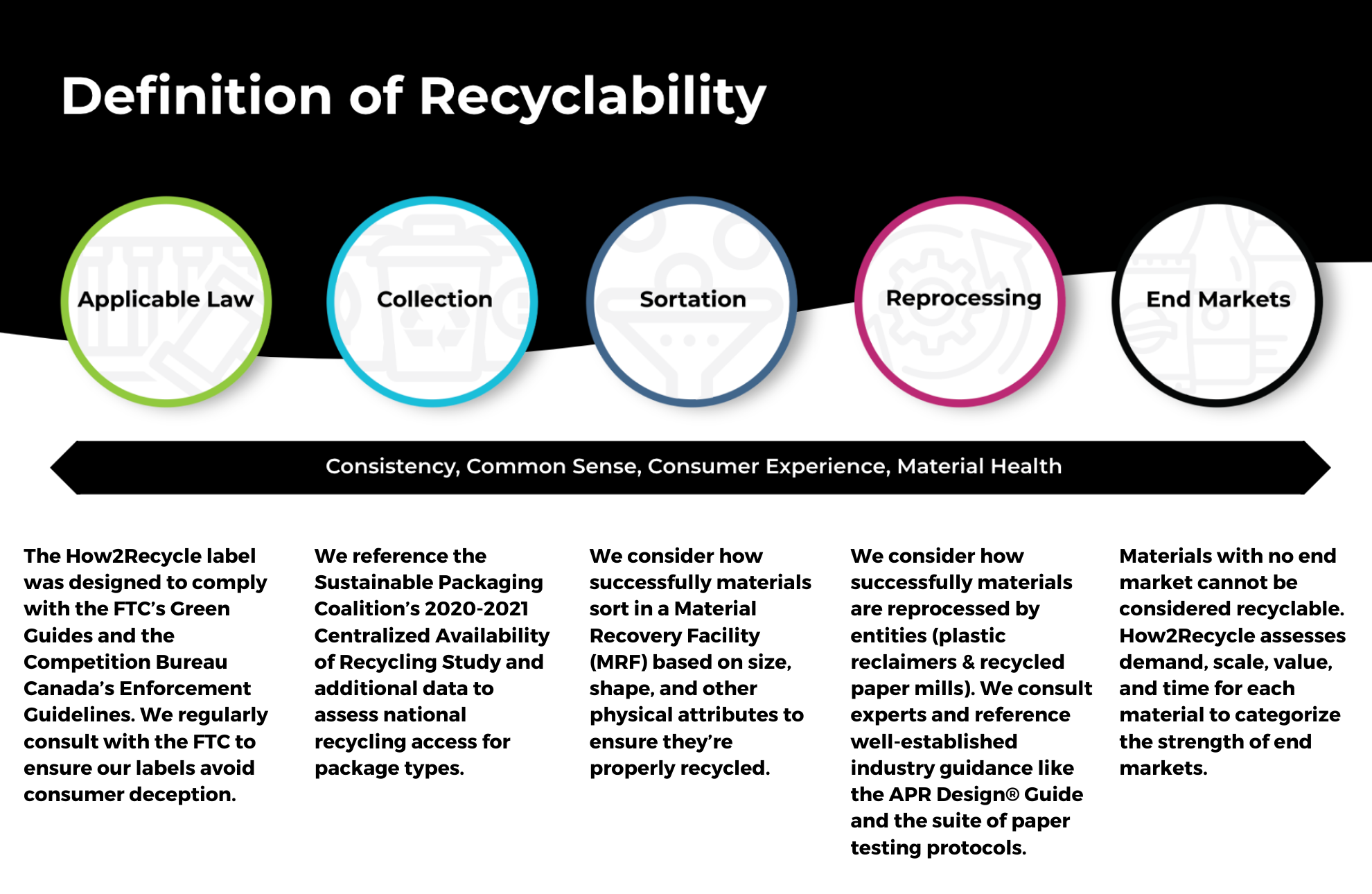
Based on these considerations, each main packaging component can be assigned one of our four recyclability categories:

In addition to each main packaging component getting one of the prior recyclability categories assigned, special instructions to the consumer to prepare the material correctly for recycling may or may not be added to the How2Recycle label.
Interestingly, the majority of packaging components that are issued How2Recycle labels are either classified as Widely Recyclable or Not Yet Recyclable. A smaller amount are Check Locally or Store Drop-Off.
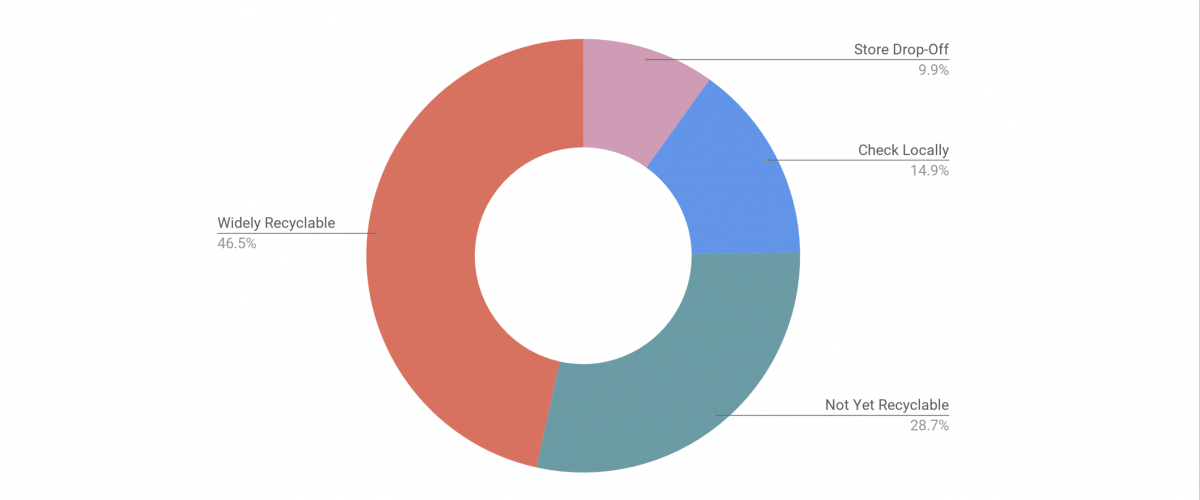
How2Recycle is an evolving program. As the use of materials in society evolves, and companies and consumption patterns evolve, How2Recycle will change along with those things to continually maximize impact. And recyclability changes: in the history of How2Recycle since the launch in 2012, some packages have become more recyclable, and other packages have become less recyclable over time. For example, due to updated data on acceptance in collection programs and information on markets for rigid polypropylene (PP) containers and polyethylene terephthalate (PET) thermoforms in January 2020, How2Recycle downgraded the recyclability claims for those items.
How2Recycle owns the majority of the substantiation data (like in the case of the SPC Centralized Availability of Recycling study, or written records the program has on file from external experts in certain specialty areas, or lab testing results), but sometimes members come to How2Recycle with data. How2Recycle uses best practices and its best judgment to assess the meaning of that data (what is the data suggesting or not suggesting? Is it relevant?) and whether the data collection methods and conclusions are scientifically credible (who, how, where, when?). In the instance How2Recycle does not have data to definitively answer that specific question, but the member presents relevant data to provide an answer, the members’ data can potentially be used to support the How2Recycle label issued (see the How2Recycle Future Guide to Recyclability for more detail on what data is compelling).
In the absence of compelling data demonstrating its recyclability, depending on all the circumstances, How2Recycle must issue a conservative claim to a package (either the Check Locally label or the Not Yet Recyclable label). For more insight, visit the How2Recycle Guide to Future Recyclability.
Assessment criteria to achieve recyclability
How2Recycle assesses a breadth of information and scientifically credible data related to all of the following elements of recycling in order to issue the most appropriate claim:
- Collection
- Sortation
- Reprocessing
- End markets
The below table reflects important assessment criteria under each element of recyclability. But first, some important caveats to the below criteria:
- Not comprehensive. This guidance is not all encompassing. In other words, do not rely on the guidance here as complete for a package. Guidance may contain nuances depending on the packaging type and new data may illuminate the need for more details. Some packages have questions not listed here—it would be too complex to include all, and there are changes over time. This is intended as general guidance to cover most packages.
- Subject to change. Our guidance and criteria are subject to change at any time, and a How2Recycle label may be rescinded at any time based on new data or criteria. This is because the recycling system continuously evolves, and our data about recyclability updates continuously. That said, broad changes to recyclability (when the recyclability designation changes for an overarching category of packaging) will be communicated to all How2Recycle members simultaneously via updates to the Guidelines for Use on either January 31 or July 31 of each year via email newsletter, as well as posted to how2recycle.info for the general public (starting January 2020).
- Not one-size-fits-all. Not all criteria listed under each element apply to all packages. There is no perfect equation for which criteria apply to which packages and when it is OK to “check that box.” It depends on the specific package and all the circumstances at play. While How2Recycle will issue its members a custom label based on all the criteria and existing data at play for that package today, How2Recycle is unable to give members a mathematical formula or affirmative promises on a specific checklist to legally be able to rely on for future recyclability (see the How2Recycle Guide to Future Recyclability for insights as to why).
| Element | Assessment criteria |
| Collection (Access/ availability to recycling) |
Does this item have explicit or implicit access to recycle this item for over 60% of the population in the US, or over 50% in Canada? (This is the starting point to potentially receive a Widely Recyclable label.)
Does this item have explicit or implicit access to recycle this item for less than 60% of the population in the US or 50% in Canada but over 20% the population? (This is the starting point to potentially receive a Check Locally label. Below 20% access means that item automatically is deemed Not Yet Recyclable) If a package has less than 60% access, it is not eligible for a Widely Recyclable label, and if less than 20% access, it is not eligible for a Check Locally label. Data: For the US, the Centralized Availability of Recycling Study, last updated 2021. For Canada, CPIA Access to Residential Recycling of [Plastic] Packaging and Packaging Materials in Canada, PPEC Access to Residential Recycling of Paper Packaging and Packaging Materials in Canada, and for SPC by CM Consulting, Access to Residential Recycling of [All Other] Packaging in Canada. See this article for in-depth understanding of how How2Recycle interprets inconclusive access to recycling data, as well as the checks and balances that the program has in place for conclusive access to recycling data that may not tell the full story. See the How2Recycle Guide to Future Recyclability for more detail on how How2Recycle approaches substantiating data for collection for challenged packaging. |
| Sortation | Generally: How2Recycle looks to size, shape, and other attributes of packaging to ensure that the package successfully gets to where it needs to go at a Material Recovery Facility (MRF).Specifically: Size Is the item the right size to make it successfully through a Material Recovery Facility (MRF)? Shape (For paper) Is the item too deep (3D) to sort with paper packaging at a MRF? Other attributes (For plastics) Will the item be successfully identified by near infrared sortation (NIR)? For example does the label (shrink sleeve, pressure sensitive, in-mold or other) made of a different material than the container cause the container to be incorrectly sorted via NIR because more than 75% of the bottle surface area, not including bottom or closure, is covered? Does the dark color make it likely to be incorrectly sorted via NIR? List of sortation potential protocols that may be applicable for certain packages: APR A Practice for Compressing Plastic Articles for Laboratory Evaluation, to be used in tandem with any of the following test protocols (relevance of these tests depend on pack type. How2Recycle prescribes specific tests to members on How2Recycle Member Platform as needed on a package-by-package basis) APR Evaluation of the Near Infrared (NIR) Sorting Potential of a Whole Plastic Article APR Evaluation of Size Sorting Potential for Articles with at least 2 Dimensions Less than 2 Inches APR Evaluation of Sorting Potential for Plastic Articles Utilizing Metal, Metalized, or Metallic Printed Components Coming in 2020: APR 2D/3D sortation potential protocol Only a few select packages require special testing. Of those, members commission their own tests per the above protocols and submit results to How2Recycle for review. See the How2Recycle Guide to Future Recyclability for more detail on how How2Recycle approaches substantiating data for sortation for challenged packaging. Note that How2Recycle is currently studying 2D/3D sortation for certain plastic and paper items. |
| Reprocessing | Generally:
Is there an aspect of the package design that would cause issues in reprocessing? Does the packaging contain or come into contact with hazardous or potentially hazardous materials? Does the product leave residue on the packaging? If so, will the recycling process be expected to reasonably manage any residue not removed by the consumer, and/or, can special instructions be provided to the consumer to correctly prepare the package for recycling? Specifically: Technical reprocessability analysis can be simple or complex depending on the packaging type. For plastics, How2Recycle looks to the APR Design® Guide for Plastics Recyclability to assess potential impacts of: — Barrier layers, coatings, additives — Color — Closures — Labels — Attachments For paper packaging, How2Recycle has historically consulted with Recycled Paperboard Technical Association to assess potential impacts of: — Alternative fibers — Coatings — Attachments How2Recycle also has consulted with experts at Glass Packaging Institute, The Aluminum Association, Steel Recycling Institute, and Carton Council regarding specific packaging design issues as they relate to successful reprocessing. List of test protocols that may be applicable for certain packages (relevance of these tests depend on pack type. How2Recycle prescribes specific tests to members on How2Recycle Member Platform as needed on a package-by-package basis): For plastics: an array of APR test methods are available for different considerations For paper packaging: — For unbleached rigid paper packaging with single sided poly coating or poly alternative coating: OCC equivalency testing by Western Michigan University, University of Wisconsin Stevens Point, or Innofibre Laboratory, both repulpability (Part 1) and recyclability (Part 2) — For bleached rigid paper packaging with single sided poly coating or poly alternative coating: SBS equivalency testing by Western Michigan University, both repulpability (Part 1) and recyclability (Part 2). Only a few select packages require special testing. Of those, members commission their own tests per the above protocols and submit results to How2Recycle for review. See the How2Recycle Guide to Future Recyclability for more detail on how How2Recycle approaches substantiating data for sortation for challenged packaging. Note that for polyethylene (PE) film, How2Recycle is studied the impacts of specific innovations on the Store Drop-Off stream. |
| End Markets | A package cannot be considered recyclable if it does not have an end market. How2Recycle has three potential end market categories for assessing the end market of a specific package. A package will be characterized as fitting one of the following three categories:
— Strong end markets — Moderate strength end markets — None or negligible end markets. And then based on which end market category applies to a specific package, that package will be eligible for certain recyclability designations: — Widely Recyclable items must have strong end markets. — Check Locally items must have at least moderate strength end markets. — Items that have none or negligible end markets must be deemed Not Yet Recyclable. Each definition of end markets focuses on several key elements: — Demand. Whether the recycling industry has signaled meaningful demand for the material; and — Scale. Whether the material is getting recycled at meaningful volumes; and — Value. Whether the material carries meaningful value; and — Time. Whether value for the material has been sustained over a reasonable time period. In order to meet the standard for having an end market, a package must possess all these characteristics: demand at scale and value across a period of time. In short, positive end markets consist of: Demand + Scale + ( Value Δ Time ) Taking that basic formula into consideration, How2Recycle has developed the following 3 strengths of end market categories based on the nature of the demand, scale, and value of a material across time. Strong end markets — Package is explicitly accepted in an existing bale specification, and that bale is bought by recyclers for recycling at scale, for positive value, for a reasonable amount of time. Moderate strength end markets — Package is explicitly or implicitly accepted in an existing bale specification, and that bale is bought by recyclers for recycling at some scale, for positive value, for a reasonable amount of time. None or negligible end markets — Package is unclear or unknown if accepted, or is implicitly prohibited or explicitly prohibited in an existing bale specification, or package is explicitly or implicitly accepted in an existing bale specification but that bale is not bought and sold at some scale, or bale is bought and sold for negative value for a reasonable amount of time without the material otherwise being intentionally and adequately managed by MRFs and/or governmental entities as a part of the overall material mix. For further definitions of some of these concepts, visit the full rule here. IMPORTANT: In addition to these end markets categories: if materials are being collected for recycling but are sent to landfill, incineration, or waste to energy to any appreciable degree, those items are not eligible for unqualified (Widely Recyclable or Store Drop-Off) recyclability claims. If this is happening to an extensive degree, an item is not eligible for any recyclability claim at all (will receive the Not Yet Recyclable label). |
Additionally, How2Recycle considers material health. How2Recycle may render a package Not Yet Recyclable if it contains intentionally added substances that are harmful or potentially harmful to the environment and/or human or nonhuman animal health. For a full explanation of How2Recycle’s material health rule, visit this article.
Additionally, How2Recycle considers whether consumer action to prepare the item for recycling is reasonable. For a full explanation of How2Recycle’s rule on consumer separation, visit this article.
NOTE: Assessing recyclability for Store Drop-off is different than assessing for other recycling streams. Because the Store Drop-off label only applies to polyethylene (PE) film collected in stores (available to the majority of the US population), and does not go through a MRF (in the United States), analysis differs. For example, sortation is relevant only if sort equipment at the PE film recycler (or a MRF in Canada) suggests there may be an issue.
Currently under study for How2Recycle
How2Recycle continuously engages in new research to deepen its understanding of recyclability. These current research projects will continue to support How2Recycle decisionmaking:
- Research on end markets for certain materials
- 2D/3D sortation in MRFs per future sortation potential test protocol by APR
Complex issues in recyclability flagged by How2Recycle for future consideration
How2Recycle may consider these complex issues in the future:
- How and to what extent robotics and AI in recycling impact successful sortation of specific package types (How2Recycle will seek to standardize analysis when these technologies approach scale in North America)
- Whether the Check Locally thresholds should be adjusted for practical reasons related to market volatility
- Whether there should be a specific threshold for yield loss to disqualify specific packages from receiving a positive recyclability claim
- How and to what extent the dramatic, recent push for innovation in fiber packaging for product categories traditionally packaged in plastic will potentially impact or materially change the recycled paper stream. Specifically, as fiber packaging now seeks to accomplish from a performance or aesthetic perspective what plastic historically has been able to do, there will be an explosion of innovations. It’s important for industry to ensure that they are developed with an understanding of how to design for recycling from the start.
- How to assess recyclability in regards to differing food contamination levels on paper packaging
For even more recyclability information, visit our companion resource: the How2Recycle Guide to Future Recyclability.
This report, the information contained herein, and the images are authored and owned by GreenBlue, the parent nonprofit of How2Recycle. Any copies, derivatives, references or uses of this work must be attributed to How2Recycle with a URL link to this page.
If you are a member of the public and you do not see the How2Recycle label on your favorite brands, reach out to them and ask them to join this movement of transparent and standardized recycling labeling.
If you are a brand or retailer and interested in joining the How2Recycle program, reach out to how2recycle@greenblue.org today.
If you have any feedback for how the How2Recycle program and this criteria may be improved, please submit feedback to how2recycle@greenblue.org.
Originally published April 2020. Last updated July 2021.

